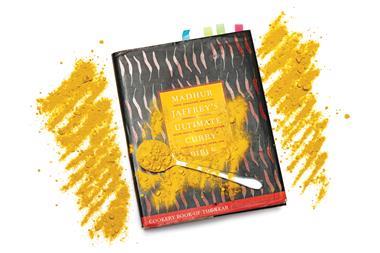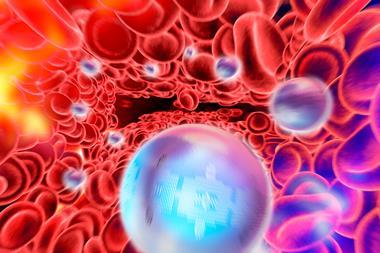If you’re cooking a curry, Ashish Kumar has a piece of advice – switch on your extractor fan. Or, if that’s not an option, open a window. Why? Because his research shows that cooking curries in poorly ventilated spaces can lead to high levels of volatile organic compounds (VOCs),1,2 some of which are linked to negative health effects with regular exposure.
Outdoor air quality has long been on the agenda of chemists, policymakers and others. But our understanding and regulation of indoor pollution is at a much earlier stage. Most people spend about 90% of their time indoors, either at home or at work, yet ‘we have very little information on what we are breathing and what sort of pollutants are present inside our homes,’ explains Kumar. However, the data we do have suggests that these pollutants can sometimes be about five times higher in concentration than in the outside air, he adds.
Kumar, who until recently was a postdoctoral researcher at the University of York, is one of a growing number of scientists working to close this knowledge gap. He was researching how everyday activities in the home influence indoor air quality as part of Ingenious – a UK-based collaboration seeking to better understand air pollution in homes.3 Working with Terry Dillon, one of Kumar’s projects involved tracking the emissions released when cooking a chicken curry.
Chicken in a fried onion sauce
Seeking a recipe that reflects typical UK home-cooked curries, Kumar and his colleagues based their study on Madhur Jaffrey’s chicken in a fried onion sauce. ‘Coming from India, that is what I am also familiar with,’ says Kumar ‘It’s a common curry that I would cook at my home as opposed to one you would find in a restaurant.’
The experiments were performed in an outbuilding adjacent to York’s Wolfson Atmospheric Chemistry Laboratories and analysed with selected ion flow tube mass spectrometry.

Before turning their attention to the full complexity of a curry, Kumar and his colleagues began with its individual ingredients and the emissions they released when heated. First, they measured the VOCs emitted while frying wheat flatbread dough or puri in a variety of oils including rapeseed oil and ghee. Next, they characterised and quantified the compounds released when shallow-frying dried cumin, turmeric and coriander, as well as fresh ginger, garlic and chilli pepper.
They even compared two samples of cumin – one freshly bought from the supermarket and another that had lingered in a cupboard for 18 months, before they tested other dried herbs and spices not included in the curry recipe. ‘It’s sort of a detective work. You have to find the fingerprints,’ says Kumar.
The experiments confirmed that cooking has a significant impact on indoor air chemistry. Across the individual cooking experiments, they identified 105 distinct VOCs in the cooking plumes of the five dried herbs and 11 ground spices. This included 19 aromatics, 14 terpenoids, 15 aldehydes, nine alkanes, six haloalkanes, seven alcohols, seven alkenes, six esters, six furans, seven ketones, five nitrogen-containing compounds, five sulfur-containing compounds and four acids. The age of the cumin made a difference, with the fresher sample emitting much higher levels of monoterpenes, while the older sample emitted about three times more methanol. Ginger released a notable amount of eucalyptol and other monoterpenoids, accounting for nearly a third of its total VOC emissions.
It’s the secondary products that are much more concerning
When it came to cooking the full curry, there were two distinct VOC spikes. The first spike in alcohol emissions, dominated by methanol, occurred as onion, garlic, ginger and chilli hit the hot oil. Ethanol levels remained low until the second spike, which came when tomatoes were added to the pan. Aldehyde concentrations rose steadily with heating and surged as the vegetables were added. And, as predicted, the dried spices – turmeric, cumin, chilli powder and coriander – triggered a noticeable release of monoterpenes.
Kumar notes that many of the emissions aren’t necessarily bad for your health per se. However, some VOCs, especially the monoterpenes, are highly reactive and can quickly form harmful byproducts like formaldehyde when oxidised by radicals and ozone in air. ‘So it’s the secondary products that are much more concerning, rather than the primary emissions.’
Definitely do not stop cooking curry at home, says Kumar, ‘that’s not what we advise’. But he does recommend using an extractor fan to reduce your exposure to fumes and to cook on the back rings of the hob, where extraction is more effective. This is even more relevant given newer buildings are increasingly designed to retain heat, making them more airtight. ‘Without fresh air coming in, we end up breathing the same air day in, day out, exposing ourselves to potentially harmful pollutants.’
References
Both articles are open access
1 A Kumar et al, Environ. Sci.: Processes Impacts, 2025, 27, 244 (DOI: 10.1039/d4em00579a)
2 A Kumar et al, Environ. Sci.: Processes Impacts, 2025, 27, 3665 (DOI: 10.1039/d5em00385g)
3 N Carslaw et al, Environ. Sci.: Processes Impacts, 2025, 27, 355 (DOI: 10.1039/d4em00634h)

















No comments yet